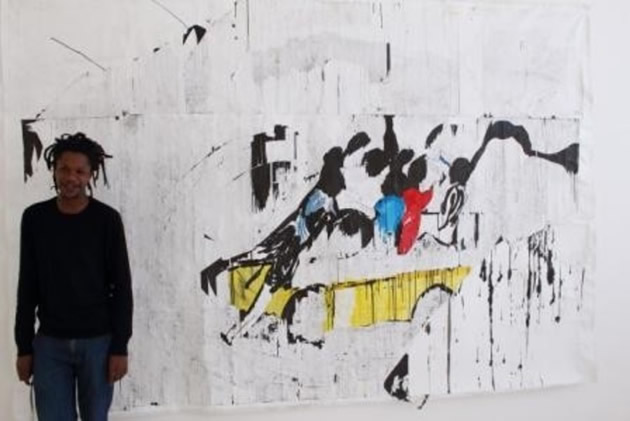The misunderstood artist

Knowledge Mushohwe Art Zone
Visual communicators often look, dress, sound and act in a peculiar way in the eyes of the “normal”. They can, in many ways, seem to carry a certain amount of mystery everywhere they go. At a formal event for example, a visual communicator may choose to do a “Magaya” — wear sandals and other
informal apparel.
Some may opt to come to such events spotting seemingly uncombed and unwashed dreadlocks or spiky hair. While such behaviour may look distasteful to the more formal invited guests, there may be little or no effort by the “normal” to fully understand or accept the unconventional style.
Back in the early 2000s when I was undertaking undergraduate studies at Chinhoyi University of Technology, two of my classmates and I boarded a commuter omnibus from college heading to Harare. My hair was long and uncombed while my two colleagues wore long dreadlocks.
We sat next to a young boy whose mother had taken a seat right behind us. As soon as we took our seats, the mother demanded that the boy hand over his satchel and wallet to her. She sat looking straight at us and listening to our conversations.
An hour later, she started to feel more at ease after realising from our discussions that we were not crooks but rather focused and dedicated university students.
We could see her laughing at our jokes and making far less threatening eye contact than before.
When she finally joined in our conversation, she made remarks to the effect of, “Boys, when I first saw you, I thought you were criminals. I feared for the well-being of my son. I had no idea you were studying at a university.”
She then gave us some words of advice. “Vanangu, you must lose the dreadlocks and dress smartly so that you are not mistaken for crooks.”
While her advice sounded valid, looking like every other person is not among most artists’ objectives.
Individuality epitomised by each visual communicator’s artistic style reverberate though every aspect of their lives.
Munyaradzi Mazarire, one of Zimbabwe’s renowned visual communicators, says his general appearance gives people a skewed opinion of his personality.
Says Mazarire, “Just because of my dreadlocks, I have been stopped numerous times on the streets by smokers asking to use my matches or cigarette lighter. Dreadlocks do not mean I smoke. Other times, I am stopped by members of the Zimbabwe Republic Police asking to perform a spot search. Dreadlocks do not mean I carry marijuana”.
Stereotyping artists simply because of their appearance is a common occurrence for many artists.
Another well-known artist, Gareth Nyandoro says his dreadlocks have made him a ‘person of interest’ numerous times.
Apart from the troubles with law enforcement agencies, Nyandoro says “I cannot afford to laugh and make jokes for long periods of time because if I do that, I run the risk of being labelled ‘high’”.
An artist’s personality often ties to his line of work and his appearance may well be an extension of the creativity.
An artist working on products expressing pan-Africanism, culture or patriotism may chose to reject Western ideas, including dressing.
It is therefore conceivable that such artists would reject the formality that Western clothing brings and instead choose to don ‘Africanised’ attires. Like-minded artists identify themselves with the Rastafarian religion, which identifies Africa as the home for all black people and emphasises repatriation and self awareness as key tenets of the African man, woman and child.
Such artists are more comfortable wearing clothes that identify them as part of the Rastafarian lifestyle.
Wearing of the traditional African colours — red, gold and green — is common among these artists.
For the ‘Rasta’ artist, it is not only the religion that they adopt, but artworks that reveal ‘Africaness’, such as wildlife paintings or drawings and sculptures of African statesman become part of the movement.
It is probably a misconception that most visual communicators do not frequently take a bath.
Visual communicators may have a reputation of being shabby and rather unpleasant but their back stories are always lost in the disdain that greets them everywhere they go.
The world sometimes misunderstands them, yet for them to be better understood, something has to change.
Visual communicators get lost in the private world that they live in because they can be rigid in the way they present themselves.
They are uncompromising when presenting their personality to the wider public because they feel “if you cannot understand me, it is not my problem”.
It is, however, high time that the artists relax their rigidity so that society understands and accepts them.
It does not hurt to wear a suit once in a while so that a ground conducive for dialogue between the artist and society is created.
The artist has to put some effort to ensure that he is better understood.
A better working relationship with society can only be good for the artist.









Comments